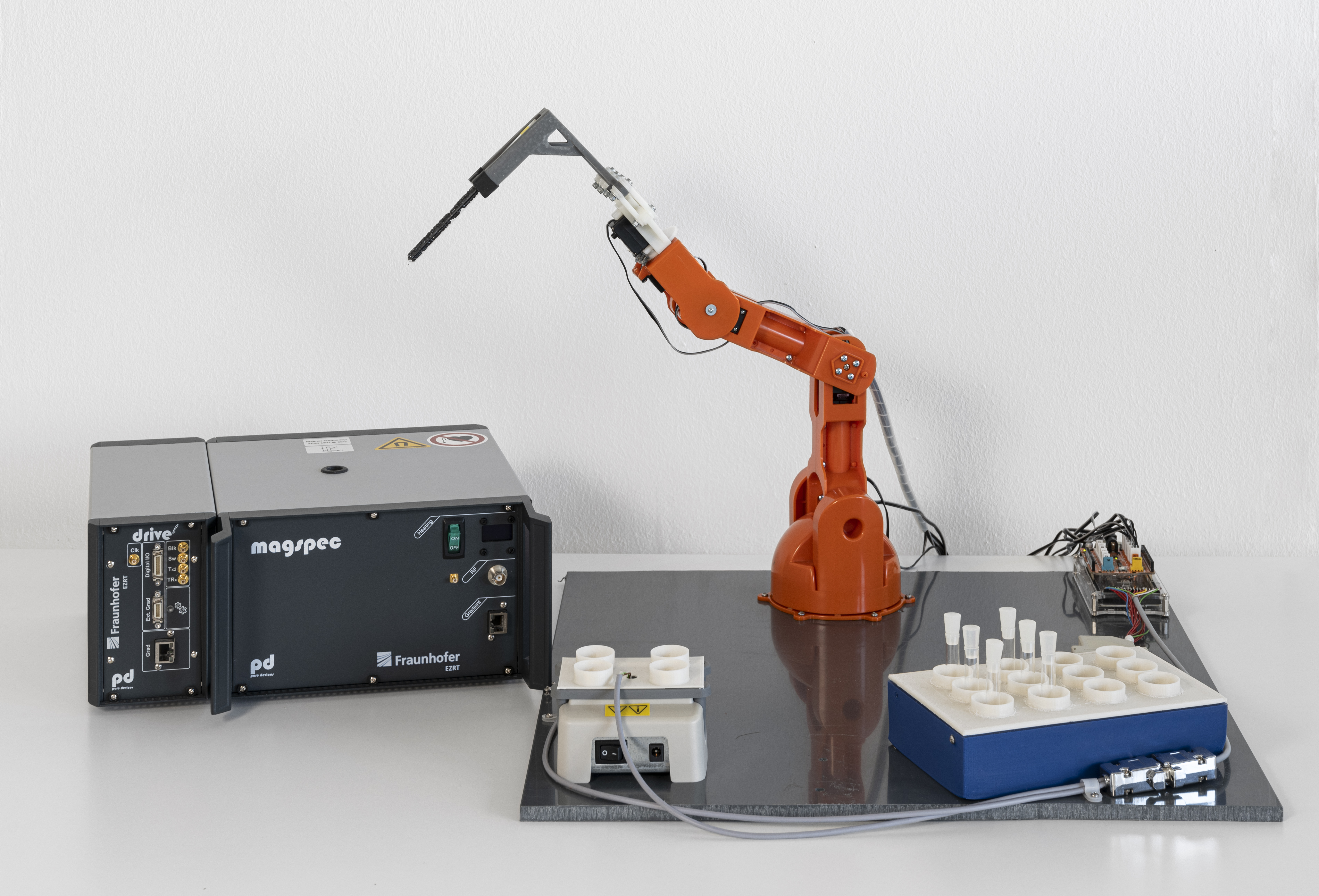Magnetic resonance (MR) allows a wide-ranging insight into the large field of biomaterials, from single cell labeling to functional analysis in tissue engineering and phenotyping. Our competences cover a very large part of the method spectrum for these applications, starting with conventional MR imaging on high and ultra-high field devices up to dedicated methods for our small benchtop devices in laboratory use.
Nondestructive MR on biomaterials

Figure 1: Automated MR measurements in the laboratory. The sample vials with the cells are kept at temperature before, during and after the measurement.
In the field of molecular and cellular MR, special contrast agents are used to further improve the system-related sensitivity or resolution. Our application-oriented research and development aims at answering questions concerning the testing of biomaterials in the best possible way with MR.
Advantages and benefits
- Non-destructive localization, characterization and monitoring of biomaterials
- Vitality check of cells and biomaterials
- Local distribution and dynamics of water and gases
- Chemical composition: e.g. water, sugar and fat content
- Access to structure, pore sizes and distribution
- Information on density and concentration
- Analysis of flow, fluidity, diffusion and viscosity
- Fabrication of dedicated mobile and miniaturized devices and components